The buzz online makes it clear: plenty of people still want the immediacy of the Roland SP-404 sampler. An MKII has been long anticipated – not to mention leaked – so let’s get directly into what’s new, and find out what else you want to know.
The SP-404MKII is really a major third-generation improvement on the SP-404 original – still with that instantly-recognizable design (and some vintage Roland lettering), still with the effects that made it popular, but now with a workflow that expands (but doesn’t complicate) the 404. And “MKII” even makes sense, as this is a much bigger leap from the 404s before than the SX was over the 2005 original.
There is, in theory, an MKII coming this direction and I’m touch with Roland, so glad to answer any questions you’ve got. I won’t even make you sit through a video, either. But I know from years and years of people playing the 404s and begging Roland to make a new one just how important it is. It’s just got a workflow that’s different from other stuff out there, and even in the age of endless software options, and evolving hardware competitors, it’s a category all its own.
As you can see straight away from the images, the MKII keeps the recognizable form factor of the 2005 classic SP-404, down to that signature layout – 4×4 mini-pads at the base, four knobs on top, circular display with rounded buttons on either side.
It just now looks a lot less toy-like, and the central display is a nice high-res OLED instead of, uh, three LED segment numbers. Let’s check the rest of the specs, though, past the obvious cosmetic features…

By the numbers
32-voice polyphony
16 GB internal storage (including preload, but seems you can delete that).
16 minutes per sample – so, yeah, finally Roland has an entry-level sampling device onto which you can load long samples and backing tracks. (The total user sample time – not per-sample, for everything – is 6 minutes of stereo on the MC-101/707, by contrast.)
Tons of storage slots, too – 16 samples/patterns x 10 banks x 16 projects = 2560 samples or patterns, each.
25 seconds “skip back” sampling captures the last half minute of anything you’re performing.
Native 16-bit WAV, AIFF, MP3, plus FLAC + M4A on the app.
2 input effect types, 37 multi-effect types.
SD card slot is available for import/export and backup/restore – now, you can’t actually expand past that 16 GB, but thanks to the storage and maximum sample length limit, you’re fine for most use cases (at least most 404-style use cases).
I/O – line out and in, mig/guitar in and out (1/4″ only, no XLR, but it’s a low-profile unit).
MIDI minijacks, in and out – guess we’re going to have to start just carrying minijack cables for MIDI instead of full-sized MIDI DIN.
USB-C connector both for audio and MIDI. (Finally!)
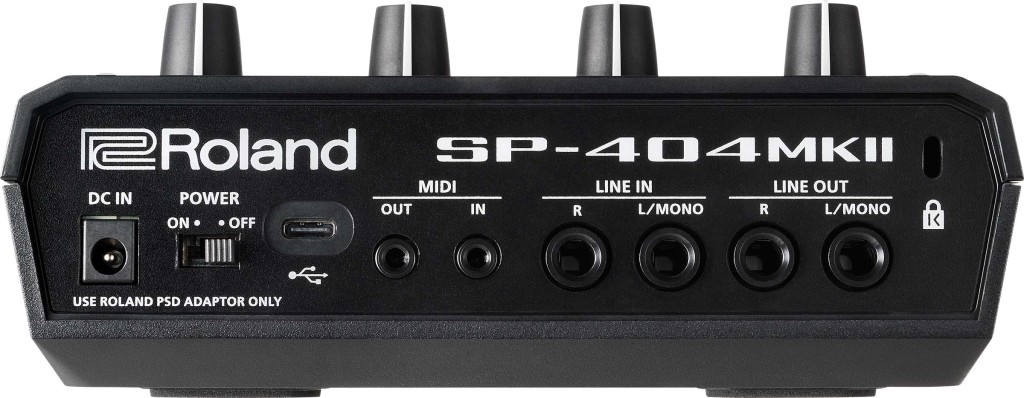
And it runs on AAs – both alkalines and rechargeable NiMH, or over USB to anything else. (There’s a 1.5A bus power supply and AC adapter in the box, too, so there’s kind of no way you can’t power this thing. I’d say you can’t use solar panels, but you probably can via that USB-C port.)
On those AAs, Roland estimates 2.5 hours continuous use – 3.5 hours on NiMH. But if that’s not enough, I’d look hard at the USB port and a power bank.
In short, this hardware is everything most samplers – from Roland or its competition – aren’t. It’s busking ready, in that it actually will run on batteries. It has massive sample storage. It’s got built-in effects. And it’s still set up to be easy to use and immediate, not a menu-diving labyrinth.
And then there’s the editing. Now that it has that OLED display, you get zoomable waveform views, real-time audio chopping right on the hardware, and an auto-chop feature (that last one I’ll have to test). There’s envelope and pitch shift. You also can re-record patterns and effect layers, which you couldn’t do before, so resampling workflows are now a thing. Plus if you’re jamming and do something inspired, you have that last half-minute of sound saved.
Effects
The other appeal of the 404 is obviously that it’s a big multi-effects toybox. So, in short, Roland are bringing the old effects back, and adding some new ones.
“Legacy” classics: Vinyl Simulator, DJFX Looper.
New: Lo-fi, Cassette Simulator, Resonator.
And new with the mic/guitar in: Vocoder, Audio Pitch, Guitar Amp Simulator.
2005 is almost long enough ago that some people will want those old SP-404 effects for nostalgia’s sake; they’re there. I’m talking to Roland as I’m curious about the internal architecture and where this fits in with the company’s hardware engineering strategies generally and what the guts are based on.

Expanded Sequencer
There are also expanded sequencer features:
Adjustable input quantize
Adjustable shuffle / custom swing
Pad Link now lets you tap one pad and trigger multiple pads
Roll button
BPM-per-bank – so to switch tempo, you can switch from one bank to another.
You can also chain patterns into sets for automated playback.
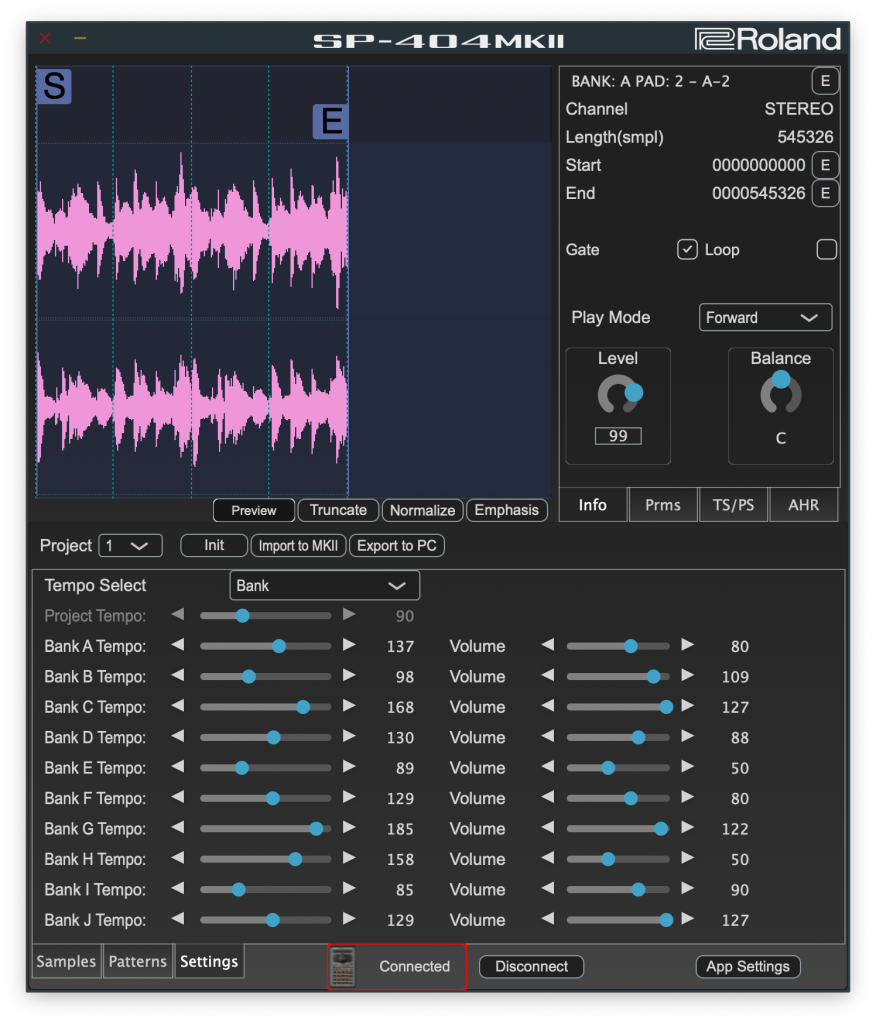
Customization and Cloud
Wait, you can customize the logo when it starts up?
Also, they’re going to make a downloadable faceplate template, so … if anyone wants a CDM IDM edition, let me know.
There’s also now a companion app and of course – this being 2021 Roland – that links to Roland Cloud Manager. The big thing there is expanding file format compatibility beyond what is available on the hardware itself. That includes the aforementioned FLAC (nerds!). But you can also convert SP-404SX and SP404A projects.
Roland Cloud is pushing sample content, too, so they promise more downloads there.
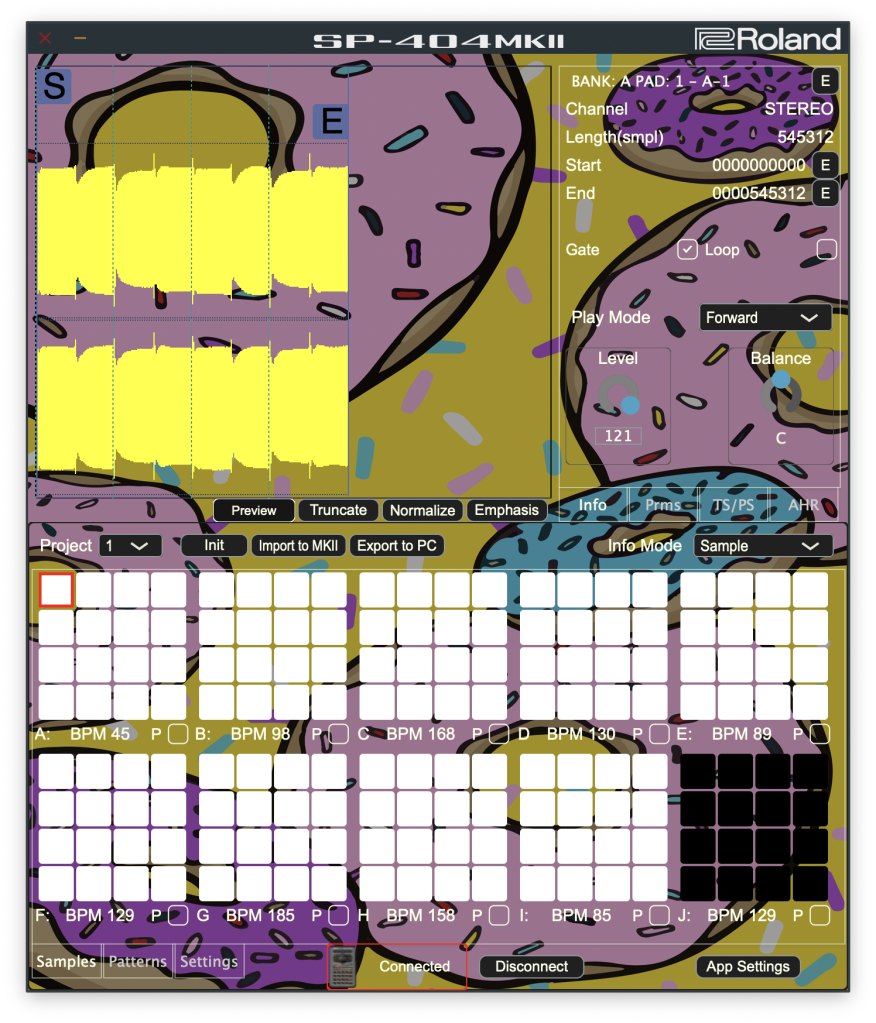
Price, availability, and how this stacks up to SP-404 history
November, USA, US$499.99.
Europe, Japan, Asia, uh everywhere else – I’m asking, stand by.
How does this fit into the larger SP-404 timeline? It looks something like this:
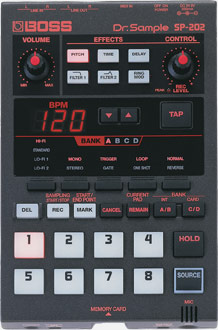
1998 – BOSS SP-202
The SP line was born at Roland as a BOSS product – which is why you’ll see references to “Dr. Sample” on the early hardware. (It’s the sampling equivalent of “Dr. Rhythm,” which was in turn a cute play on the DR prefix on those model numbers. Of course, that suggests this really might have been the DS-202, but … Roland is a little looser than that with the branding.)
The SP-202 does not get the honor of being Roland’s first compact sampler – that prize belongs to the 1995 Roland MS-1. When the MS-1 debuted in 1995, the notion of a compact, low-cost sampler was effectively a new one (outside of simple devices like Casio’s SK-1 keyboard). The MS-1 was fairly limited, though, and its dull enclosure makes it seem more like some kind of office label printer than a sampler.
So enter the SP-202, which starts to look like the SP as we now know it. Some simple design decisions will later prove to transform the product line. By switching the orientation from landscape to portrait, you emphasize hands-on manipulation of sound with the knobs on top. And adding effects (which the MS-1 lacked) proves to be a winning combo, along with other playability features. It’s still a little too crude to stand up to the later SP model, but the template was there.
Also, while I adore the Electribe line and especially the older models, it was really Roland who established the product category. KORG came to the concept later on, and not only did the BOSS SP clear the way for the Roland SP family, but inarguably also the Electribe, too. So for those of us who love live performance on compact gear, this is really the clear progenitor.

2001 – BOSS SP-303
The SP-303 also came out under Roland’s BOSS name, but apart from that it looks like it belongs in the SP family tree. Its gritty compression still makes it desirable – and it establishes a lot of the SP family’s signature effects library. (Filter + Drive, Pitch, Delay, Vinyl Sim, Isolator, Reverb, and Tape Echo)
And yeah, not to drive used prices up (the SP-303 can be had dirt cheap, I’m sure) – but if I were to get a used SP, this would be the one. It has the effects range of the SP-404, but the gritty lo-fi quality that makes going used make some sense.
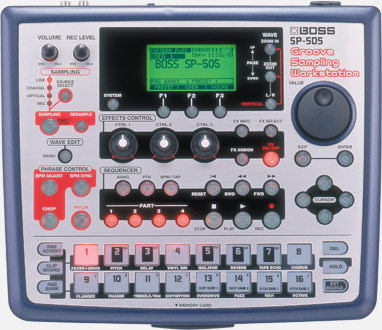
2005 – BOSS SP-505
Never try to figure out Roland product order based on the numbers. The SP-505 came before the SP-404. This underrated entry looks a little more like an Electribe competitor – or maybe it’s just that landscape orientation. But it’s one of those peak 2000s Roland devices, firmly pointed at DJs and electronic dance music, and actually a very cute and capable machine. You get a full eight voices, a couple dozen effects, 4 tracks of sequencing, and crucially chop and BPM sync right on the box.
The 505 deserves a little love here, because some of its workflow features predict even today’s SP-404MKII. Plus I know people who have been picking up Roland boxes from this era because they love the trashy European-sounding presets from these years. Funny how that stuff can become more appealing with age – I feel you, really.

2005 – SP-404
Roland took a new direction in 2000, paring back the feature-crammed 90s sampling workstations to stuff that was friendly to quick looping and sampling. It began with the BOSS “Dr. Sample” SP-202 and SP-303 (hi there, Fat Boy Slim), but then they took the hands-on sampling and friendly form factor and dial-in effects and upped everything with the SP-404:
12-voice polyphony
96 patterns (or 24 without external CompactFlash)
29 effects types
772 minutes of sampling on a 1GB CompactFlash card
The original was no slouch, even by today’s standards – and is mainly limited only by some basic sequencing features and a lack of modern effects. It’s also more limited in I/O – mic input, but no guitar in (line in only). MIDI IN, but no MIDI OUT. And of course no computer connection, which may be the biggest inconvenience now. It’s also, well, homely in a 2005 Roland way.
It’s a lot of fun as a sampler, and quickly established that simple workflow. Plus you get a lot of effects: tempo-synced looper, Subsonic, reverb, delay, and that Voice Transformer.
Wih the SP-404, in other words, Roland had a worthy rival to KORG’s Electribe series with a character all its own. And since then, Roland has basically been sticking to that SP-404 template:
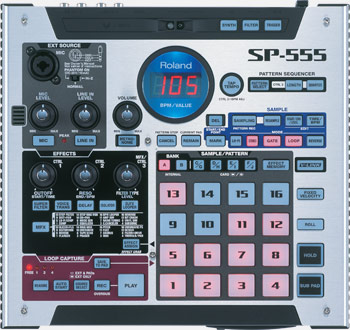
2008 – SP-555
The 555 is the 404 expanded, essentially – Loop Capture, USB audio, WAV/AIFF, a phandom-powered mic in (which you still don’t get on the new 404), and yeah this was the D BEAM wireless and V-LINK VJ era. It was also intended to work as a computer companion, with Cakewalk SONAR (Roland owned Cakewalk at the time).
You also got new effects – Super Filter and DJFX Looper.
I actually would not mind seeing an MKII of the SP-555, honestly, maybe with vocal features targeted on that mic input. (For now, it seems the equivalent of that is the Verselab MV-1. It’s got the mic in; it’s got the vocal effects.)
In its day, at least, the expanded form factor and features for the SP-555 meant it was positioned as a bigger sibling to the SP-404, not a successor. That upgrade came with the SX:

2009 – SP-404SX
The SX update to the 404 is the machine with a more modern sound engine and effects. (Of course, you might like the used original if you want a lo-fi sound – note that lo-fi effects are exactly what Roland has added to the MKII, albeit simulating retro gear. Everything goes around.)
44.1kHz/16-bit
Improved DSP
More pattern features.
Sub Pad introduces rapid triggering.
It was also what we’d call in technical terms “generally less fugly,” though maybe loses some of the original’s quirky charm.
Why was it called a Linear Wave Sampler? I’m sure there’s an answer to that, but yeah, it’s weird. (Nonlinear wave sampling?)
Reading the PR from 2009, it’s also clear that Roland recognized the SP-404 line was becoming versatile enough as to be used sort of by everyone — allowing “DJs, musicians, and sound engineers to trigger samples and jingles and apply effects on the fly at the club, gig, or theater.” Well, that’s broad.
It was also much easier to import sounds on the SX, and shuffle and quantize were more flexible.
All of this means that the SX was really the biggest update before today.
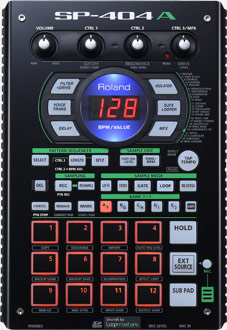
2017 – SP-404A
The SP-404A was probably the least auspicious update in Roland’s sampler history – it’s basically an SP-404SX with a new black-and-green paint job and some different effects. (The “A” stands for “AIRA.”) Making matters duller, it launched alongside two genuinely cool Boutique series products – the TR-08 and SH-01A.
But the fact that people still sought out the 404A suggests that the SX was already a pretty decent upgrade even a full hardware generation later. Just if you are looking for a used SX or A, they’re identical and you should get whichever is cheaper and/or in better condition.

2021 – SP-404MKII
This is a heck of a sequel. It’s just a huge leap forward in storage, display, sequencing, and effects features, without dropping what made the original appealing. And it remains one of the most playable, immediate samplers on the market in any category.
I think it also manages actually sampling in a way stuff like the MC-101/707 just does not. (The machine in Roland’s current range that maybe is the direct competitor, as noted in comments – the MV-1.)
The big difference is, you have a lot of new options for what to sample with – including software and iOS apps, to say nothing of advanced offerings from Elektron, 1010music, Novation, and others.
So do let us know what you want to know.
Experienced SP-404 users with questions?
Total newcomers?
Heck, why not – owners of gear from Elektron, software, and others? These days, I’m not sure there are any hard barriers between markets.
More background
Oddly the best 404 history isn’t on Roland’s own site but Reverb.com:
How the SP-404 Came to Dominate the Global Beat Scene
And they remember the Roland MS-1, which gets more obscure. (It’s really the SP series that in the end democratized the genre.)
But yeah, most of my favorite SP performances were somehow associated with Brainfeeder and Low End Theory. I’m not worthy.
Roland also took a look at both Ras G and FlyLo along with Dibia$e:
I’ll probably just poke at it and sample like weird sounds of crumpling up used chip bags. Hey, Roland, what was that tracking information again? Why does this say “shipping destination reversed”?
Anyway, ask away, readers, seriously.
Video hands-on round-up
Highlights:
And just in case you have an older SP, let’s check this trick – surprise, SP tutorials sound better in Italian: